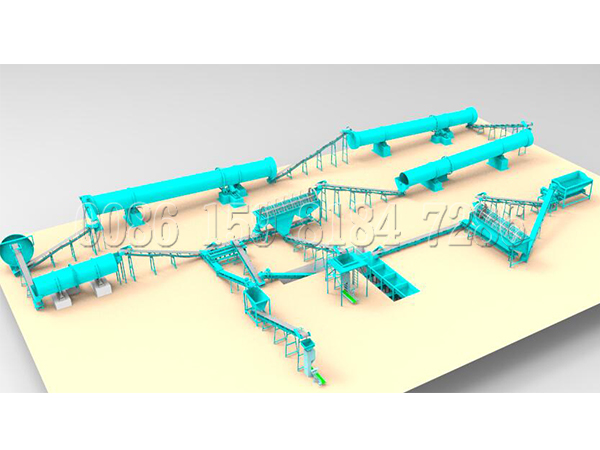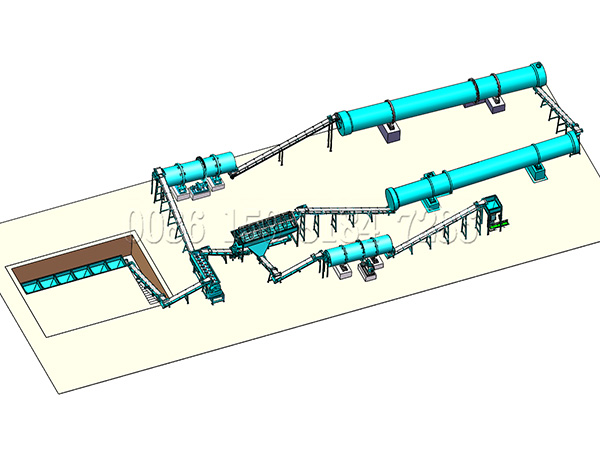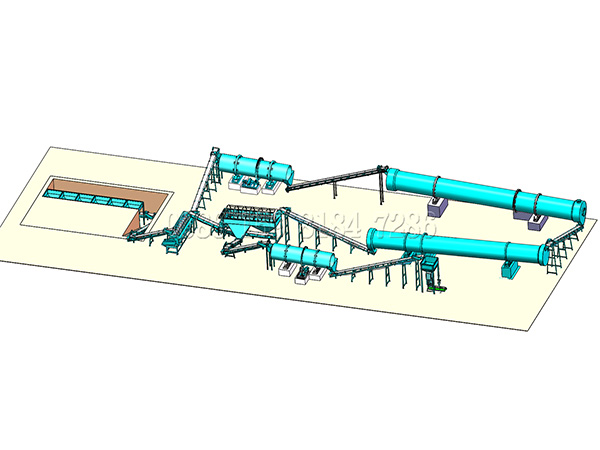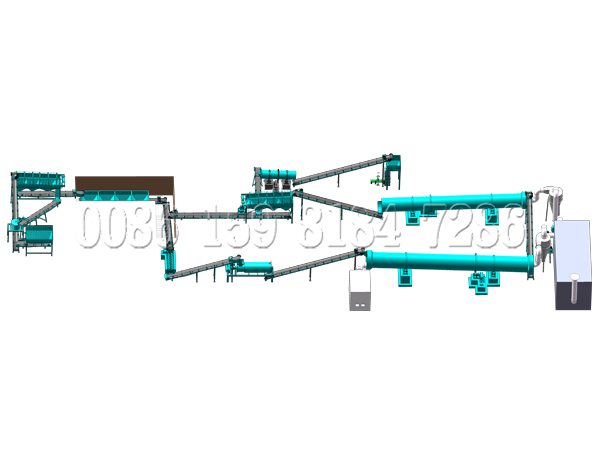The organic waste to fertilizer production line make use of organic waste as raw materials including straw livestock manure cake feeds other waste produced by processing of subsidiary agricultural products. Then these materials are made into organic fertilizer through microbial fermentation deodorization and maturity.
Performance characteristics
The products produced by the organic fertilizer production line are made from fresh chicken and pig manure and do not contain any chemical ingredients. Since the chickens and pigs have poor digestion ability and can only consume 25% of the nutrients while the other 75% of the nutrients in the feed are exhausted by feces. Thus the dry product contains nitrogen phosphorus potassium organic matter amino acids proteins and other ingredients. In terms of livestock excrement the feces and urine of a pig in a year can be combined with litter to produce 2000 to 2500 kg of high-quality organic fertilizer which contains 11% to 12% of organic matter 0.45% of nitrogen and 0.19% of phosphorus pentoxide potassium oxide 0.6% enough for one mu of land a year. The organic fertilizer is rich in nitrogen phosphorus potassium and other nutrients which are more than 6%. The organic matter content are more than 35% which are higher than the national standard.
Working principle
An organic fertilizer production line can not only meet the needs of local fertilizers but also provide the needs of the surrounding markets. Bio-organic fertilizer is widely used in various fields such as farmland fruit trees flowers landscaping high-grade lawns and soil improvement and has good effects.
The organic fertilizer production line includes fermentation equipment, granulation equipment, crushing equipment, mixing equipment, screening equipment, cooling equipment, drying equipment, coating equipment, automatic packaging equipment and other processes.
Production flow
1. Composting and fermentation of the materials. Any qualified organic fertilizer must go through the process of composting and fermentation.
2. Mixing and crushing. The crushing machines include semi-wet material crusher chain crusher and hammer crusher. The mixing machines include double shafts horizontal mixer horizontal mixer single shaft continuous mixer etc.
3. Granulation. It is very important to choose what kind of granulating method in the production of organic fertilizer. Nowadays there are disk granulation rotary drum granulation double roller extrusion granulation and other methods in the industry.
4. Drying. After granulating most of the materials have formed particles but the particle strength and water content doesn’t conforms to the standard. So the drying process is essential.
5. Cooling. After drying the materials are transmitted to cooling machine through belt. When the temperature is cooled to be normal this machine can further improve the particle strengths and reduce water content.
6. Screening. After cooling there are powdery material. This machine can screen out the fine powders and large particles. Then the fine powdery are engaged in the granulation again.
7. Coating. The finished products go to the coating process making the particles form a protective film and isolate from the outside air.
8. Packaging
The qualified products are packed by the automatic packing machine.







